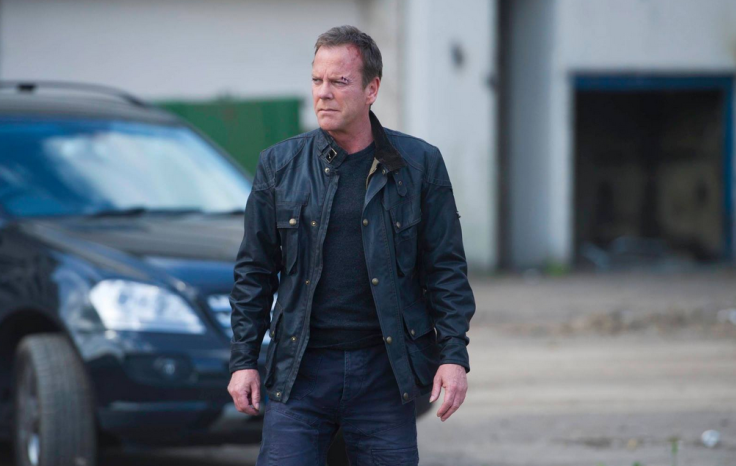CIA Torture Report Shows Disparity Between TV Depictions And Reality Of Enhanced Interrogations

The release Tuesday of the Senate Intelligence Committee report on CIA enhanced interrogation techniques, colloquially referred to as the “Torture Report,” has galvanized the national debate on the effectiveness, legality and morality of torture tactics to obtain intelligence. Despite the brutality detailed and questions of torture’s effectiveness, a split in public opinion still exists on the issue. However, media depictions of torture, especially on television, might be contributing to a skewed view among the general public about the realities of torture.
Polling routinely shows that a majority of Americans are willing to, at least tentatively, support torture, especially in cases where intelligence might be obtained to prevent a terrorist attack. What is the source of the public’s confidence and surprising comfort level with the controversial tactics.
Perhaps one reason is the depiction of torture in the media, where many television shows, especially those dealing with CIA or FBI investigations, use torture as a plot point in episodes designed to entertain.
On the popular NBC show “The Blacklist,” rogue FBI informant Raymond “Red” Reddington (James Spader) routinely uses torture and coercion to gain information, shooting would-be moles and threatening their lives, often speaking with a degree of cold sarcasm, to get his way.
On Showtime’s “Homeland,” sleep deprivation was used by the CIA in the interrogation of any enemy agent. On the classic ABC show “Lost,” one character, Sayid Jarrah (Naveen Andrews), is a former torturer for the Iraq Special Republican Guard who uses his ruthless expertise to retrieve stolen asthma inhalers from another marooned survivor of a plane crash, including prying off the man’s fingernails.
Of course, on FOX’s “24” there were numerous instance of Jack Bauer (Keifer Sutherland) using torture tactics to force information out of prisoners.
However, the CIA report reveals a huge disparity between torture on TV and the reality of the “enhanced interrogation” tactics. Whether a television show’s depiction of torture takes a positive or negative view on the practice from a moral standpoint, it usually portrays torture as effective. There may or may not be guilt on the part of the character resorting to torture – Sayid on “Lost” is haunted by his military past, while Jack Bauer on “24” thinks nothing of resorting to violent coercion –but in both cases the characters, assuming they are the show’s “good guys,” get the information they wanted.
In fact, the CIA report stands in stark contrast to this idea. The report reveals that much of the information gathered in the enhanced interrogations was inaccurate and that torture often led to fabricated confessions and information divulged solely to appease interrogators and prevent further torture.
Television depictions of torture commonly understate its brutality and duration. Torture on television might last a scene, but the CIA report details cases of sleep deprivation lasting over 180 hours and one man, Khalid Sheikh Mohammed, the mastermind behind the 9/11 attacks, being waterboarded at least 183 times. Additionally, while torture on television might take the form of beating an insolent and enraged enemy during a hostile standoff, the report shows multiple instances of sexual abuse, forcing detainees to stand on broken feet, and “rectal hydration” of physically deteriorated detainees.
Finally, torture scenes on television often portray an emotional law enforcement or intelligence official desperate to save a life in imminent danger, only resorting to torture in frustration after conventional interrogation has failed. The CIA report describes a cold and calculated system of bureaucratically administered torture over long periods of time by interrogators who, in some instances, were instructed to carry on with the interrogations by senior officials, despite objections to the tactics being used and the effectiveness of the intelligence being obtained. In some cases, detainees were even tortured before initial questioning to see if they would cooperate.
There are many equally unrealistic scenes in movies as well, but film has done a better job at showing the ugly reality of torture. “Zero Dark Thirty” (2012) showed the shocking brutality and degradation involved, especially in waterboarding, in addition to addressing questions about the value of intelligence gathered in enhanced interrogations. Jon Stewart’s “Rosewater,” released this year, tackles the issue of torture as a government bureaucracy.
However, the CIA report proves most media depictions of torture to be grossly inaccurate. Unfortunately, these depictions might be the lens through which much of the public views the debate about America’s use of torture tactics.
Does TV affect how Americans think of torture? Tweet your thoughts to @Ja9GarofaloTV.
© Copyright IBTimes 2025. All rights reserved.






















